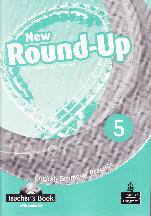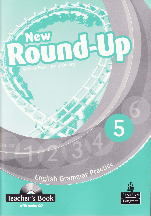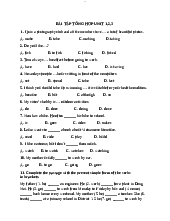












Preview text:
LESSON PLAN The beggar Topic: The beggar Class: 4 Time: 40 minutes I. OBJECTIVES 1. Knowledge:
- Identify difficult words in the lesson: overflow, dirty, groan, squirm, ...
- Recognize the content of the lesson: Praise the boy who has a kind heart,
sympathizes and takes pity on the beggar with the misfortune of the poor old beggar. 2. Skills:
- Correctly read difficult or confusing languages and words due to the
influence of dialects: stooped, quite red, overflow, pathetic, puffy, groaning, …
- Fluently read the whole reading, pause, pause slightly after punctuation
marks, between phrases, emphasize in descriptive and meaningful words. -
Read the whole article expressively, showing the appropriate voice for each passage. 3. Attitude
- Pay attention to the lesson, be active, explore, actively build lessons. -
Love Vietnamese subject especially reading skill. II. TEACHING AIDS 1. Teacher: - Computer, sceen projector
- Video, pictures about lesson 2. Students:
- Text book, notebook, pencil,…
III. METHODS AND TECHNIQUES 1. Methods: - Question and answer - Observation - Problem solving - Group teaching 2. Techniques: - Tablecloth technique - Brainstorm IV. VOCABULARY Words Pronounce Means pathetic /pə θet ˈ ɪk/ making you feel sad tattered / tætəd/ ˈ old and torn; in bad condition groan / rə ɡ n/ ʊ
to make a long deep sound because
you are annoyed, upset or in pain, or with pleasure leverage / li ˈ vər ː d ɪ / ʒ
the ability to influence what people do sincerely /sɪn s ˈ əli/ ɪ in a way that shows what you really feel or think about somebody/something V. PROCEDURES Time Content Teacher’s activities Student’s activities 5’ Activity 1: - Organizational - Students are stable, Warm up stability take the subject books * The - Check the previous - Students read and objectives: - lesson: answer the questions Stabilize order, + Invite 3 students to prepare students continue reading the to be ready to study “article visiting friends” and answer questions - Check the previous lesson about the content of the lesson. + Invite a student to read the whole article and answer the questions: What is the meaning of the opening and closing lines of the letter? - Comment and give students points. - Teacher comments and praises 3’ Activity - Give the illustrated + The painting depicts a 2:Introduction picture and ask scene on the street, a boy * The students: holding the hand of an objectives: - + What scene does the old beggar. The old man Arousing picture show? was saying something curiosity, to him. + The beggars wanting to learn are poor and hungry so about the work everyone is sympathetic; give them food, drink, money + Have you seen the beggars? How do I see them? How do others treat them? - Listen to the teacher + What did the boy in talk the article give the old man? - The children will learn today's lesson through the story of the famous Russian writer Tukgenev. 10’ Activity A, Read the full - Students read the 3:Practice reading whole reading, the reading * The : whole class read objectives - Call 1 or 2 students to silently read the whole The whole text is reading read with a Teacher notes the gentle, voice sympathetic, of reading: The whole
pitiful, pitiful text is read with a
voice, the boy's gentle, sympathetic,
words are read pitiful, pitiful voice, the with pity for the boy's words are read old man, the old with pity for the old man's words are man, the old man's - Listen to the teacher touched by the words are touched by boy's heart. the boy's heart. - Emphasize words: stooped, quite red, torn, pale, tattered, pathetic, alas, gnaw, ugly, puffy, groan, shake, tremble, clutch, stare staring, smiling, squeezing, thanking, understanding, giving, talk - The lesson is even me. B, Practice reading passages - Teacher asks students divided to divide the reading into 3 parts. + Paragraph 1: At that time … asked for help. + Paragraph 2: I rummaged...for you all. + Paragraph 3: The old man's beggar…. - Teacher talk after divide paragraph in the reading - Teacher asks students + Students take turns
to read passages in turn reading the passages for the first time for the first time + The teacher reminds + Students practice students to pause in reading keywords sentences and practice reading difficult words: stooping, red reading, struggling, pathetic, puffy, groaning, ... - Teacher asks students to read it again turn for the second time + Students explain the - Students take turns to words: stooped, quite read the passages for red, broken, pathetic, the second time staring + Students explain the words C, Group reading - Students practice practice the whole reading - Teacher asks students in the group to practice reading the - The groups have passage in groups a reading test and - The teacher gives the give comment groups a reading test each other - Teacher comments, summarizes D, the teacher reads the sample, practices reading the whole reading - Students read the - Teacher invites whole reading students to read the whole lesson - Students listen to - The teacher reads the the teacher sample of the whole lesson, uncle voice reading - 1 Student read aloud. - Invite students to read paragraph 1 - Read silently and - Ask students to read take turns answering. silently and answer the questions. 15’ Activity 4: Find - Ask students to read - Read silently, understand the paragraph 1 silently exchange, follow each reading and answer the other to answer the * The questions: questions: objectives: + When did the boy Outlining the meet the old + The boy met an old beggar? content and beggar while walking meaning of the on the street. He stood story: Praise the right in front of him. boy who has a + The old man stooped, + What is the image of kind heart, red eyes read, tearful, the poor old sympathizes and beggar? pale lips, ragged clothes, sympathizes with ugly figure, swollen, the misfortune of dirty hands, groaning the poor old voice begging. beggar. + Poverty made him miserable. - 1 Student read aloud. + What made the old man look so pitiful? - Invite a student to read paragraph 1 again, the whole class thinks and - Paragraph 1 shows finds the main idea of a pitiful old beggar. the passage. - Summarize the main idea of paragraph 1. - Ask students to read paragraph 2 silently and answer the questions: + What did the boy do + The boy proved to show his affection his affection for the for the old beggar? old beggar by: 1. Action: rummage through bag after bag to find something for him. Grasp the old man's hand. 2. Words: Don't be mad at me, I have nothing to give you. + He is a kind person, he + How did the boy's sincerely sympathizes kind actions and words with the old man, demonstrate his respects and wants to affection for the old help him. man? - Ask students to explain the word: - Property: wealth property, leverage. The and money. teacher explains if the students say it incorrectly. - What does paragraph 2 say? - Trembling: trembling, weakness, - Summarize the main inability to control. idea of paragraph 2. - The boy felt sorry for the old man and wanted to help him. - Ask students to read - Read silently, paragraph 3 silently exchange and answer and answer the questions. questions: + The boy had nothing to give the old man, + He said, "So you but what did the old have given it to him." man tell him? + Do you understand what the boy gave the + The boy gave the old old man? man affection, sympathy and respect. + What details show that? + Details: He tries to find something. He apologized sincerely and + After the old man's squeezed his hand. words, the boy also felt + The boy received that he had received from the old man something from him. In gratitude and your opinion, what did sympathy. He the boy receive from understood your heart. the old beggar? - What does paragraph 3 tell you? - Summarize the main - The sympathy of the idea of paragraph 3. old beggar and the boy. - Think and answer questions: Praise the boy - Invite a student to who has a kind heart find the main content that empathizes and of the lesson. sympathizes with - Write the content of the misfortune of the article. the old beggar. - The story of the writer Nga Tukgenev has a profound meaning. The boy had nothing but his heart to give to the old - Listen to the teacher beggar. The old man talk received nothing, but loved and was touched by his heart. Two people, two identities, different circumstances, but have empathy. They give and receive from each other the harmony in their souls. 3’ Activity 6: - Consolidation: - Memorize and Consolidation Praisethe boy who has perform tasks - Homework a kind heart, sympathizes and sympathizes with the misfortune of the poor old beggar. - Homework: Readagain the passage and answer the questions - Prepare for the next lesson




